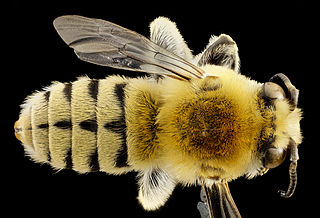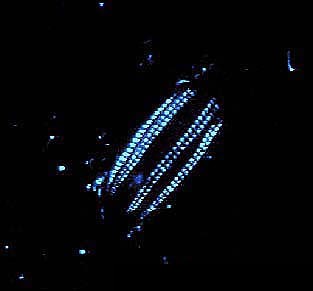
Wing Chun is a concept-based fighting art, form of Southern Chinese kung fu, and a close-quarters system of self-defense. It is a martial arts style characterized by it focus on close-quarters hand-to-hand combat, rapid fire punches and straightfoward efficiency. It has a philosophy that emphasizes capturing and sticking to an opponent’s centerline. This is accomplished using simultaneous attack and defense, tactile sensitivity and using an opponent’s force against them.

Ip Man, also known as Yip Man, was a Hong Kong-based Cantonese martial artist and a grandmaster of the martial art of Wing Chun when he was 20. He had several students who later became martial arts masters in their own right, the most famous among them being Bruce Lee.

Botrychium is a genus of ferns, seedless vascular plants in the family Ophioglossaceae. Botrychium species are known as moonworts. They are small, with fleshy roots, and reproduce by spores shed into the air. One part of the leaf, the trophophore, is sterile and fernlike; the other, the sporophore, is fertile and carries the clusters of sporangia or spore cases. Some species only occasionally emerge above ground and gain most of their nourishment from an association with mycorrhizal fungi.
Desmopteridae is a family of pelagic sea snails or "sea butterflies", marine gastropod mollusks in the superfamily Cymbulioidea.

Mahonia is a genus of approximately 70 species of evergreen shrubs and, rarely, small trees in the family Berberidaceae, native to eastern Asia, the Himalaya, North and Central America. They are closely related to the genus Berberis and botanists disagree on whether to recognize a separate Mahonia. Many botanists prefer to classify Mahonia as a part of Berberis because several species in both genera are able to hybridize, and because there are no consistent morphological differences between the two groups other than the leaf pinnation. However, recent DNA-based phylogenetic studies retain the two separate genera, by clarifying that unifoliolate-leaved Berberis s.s. is derived from within a paraphyletic group of shrubs bearing imparipinnate evergreen leaves, which are then divided into three genera: Mahonia, Alloberberis, and Moranothamnus ; a broadly-circumscribed Berberis would also be monophyletic.

Washingtonia is a genus of palms, native to the southwestern United States and northwest Mexico. Both Washingtonia species are commonly cultivated across the Southern United States, the Middle East, southern Europe, and North Africa, where they have greatly hybridized.

Pier Andrea Saccardo was an Italian botanist and mycologist.

Melchior Treub was a Dutch botanist. He worked at the Bogor Botanical Gardens in Buitenzorg on the island of Java, south of Batavia, Dutch East Indies, gaining renown for his work on tropical flora. He also founded the Bogor Agricultural Institute. He traveled and collected across many areas of Southeast Asia.

Carcharias is a genus of sand tiger sharks belonging to the family Odontaspididae. Once bearing many prehistoric species, all have gone extinct with the exception of the critically endangered sand tiger shark.
Begonia hainanensis is a species of plant in the family Begoniaceae. It is endemic to China. It grows in forests and on mossy rocks.

Ptychatractidae is a taxonomic family of sea snails, marine gastropod mollusks in the superfamily Turbinelloidea.

Horntvedt Glacier is a small glacier flowing to the north coast of the island of Bouvetøya. It is situated immediately east of Cape Circoncision. It was first charted in 1898 by a German expedition under Carl Chun, and recharted in December 1927 by a Norwegian expedition which named it for Harald Horntvedt (1879-1946), the captain of the expedition ship Norvegia.
Eurhamphaeidae is a family of ctenophores.

Chaceon is a crab genus in the family Geryonidae, and was first described in 1989 by Raymond Manning and Lipke Holthuis.

Habropoda is a genus of anthophorine bees in the family Apidae. There are at least 50 described species in Habropoda.
Mertensiidae is a family of ctenophores belonging to the order Cydippida.

Euplokamis is a genus of ctenophores, or comb jellies, belonging to the monotypic family Euplokamididae. Despite living for hundreds of millions of years in marine environments, there is minimal research regarding Euplokamis, primarily due to their body structure. Research on the evolution of the basic body structures of diploblastic metazoans revealed that there are four major phyla, including the Ctenophores. Although the morphology of Euplokamis often resembles the medusa stage of Cnidarians, their eight rows of combs are one distinguishing feature that led to the official classification of Ctenophores. After being originally described by Chun (1879), the family Euplokamididae was expanded by Mills (1987) due to the discovery of a new species, Euplokamis dunlapae. Further research indicated that Euplokamis should be identified from Mertensiidae due to the rows of combs and some compression. They may also be distinguished from the genus Pleurobrachia due to their more elongated shape. Additionally, various adaptations of Euplokamis have been observed such as the use of tentacles for movement/feeding, a complex nervous system, and bioluminescent capabilities. Other characteristics including a defined mesoderm, lack of stinging cells, developmental differences, and symmetry supported the reclassification of these organisms.

Haeckelia is a genus of ctenophores belonging to the family Cydippida.
Lampea is a genus of ctenophores belonging to the family Lampeidae.













